New info on Pr-09852 Belgorod submarine and Arctic plans
 Less than a week after Russia unveiled its new arctic base on Alexandra Island in the Arctic Circle, Russian media have begun reporting on the future launch of the Project 09852 Belgorod submarine (see Izvestia (in Russian) and Sputnik News in English). The headline fact is that she will be the largest (or at least o=longest) submarine in in the world, at 184m. This is thanks to a 30m hull insert which allows her to accommodate the relatively large Losharik deep sea submersible (AGS).
Less than a week after Russia unveiled its new arctic base on Alexandra Island in the Arctic Circle, Russian media have begun reporting on the future launch of the Project 09852 Belgorod submarine (see Izvestia (in Russian) and Sputnik News in English). The headline fact is that she will be the largest (or at least o=longest) submarine in in the world, at 184m. This is thanks to a 30m hull insert which allows her to accommodate the relatively large Losharik deep sea submersible (AGS).
Original artwork - CLICK for HIGH-RESOLUTION image. 
However, her size isn’t the real headline here. The articles also outline some of her roles, supporting my previous analysis that Russia is planning an underwater submarine detection system under the arctic. This is strategically important and is intended to turn the tables on the US Navy (and to an extend the Royal Navy).
Get The essential guide to World Submarines
This Covert Shores Recognition Guide Covers over 80 classes of submarines including all types currently in service with World Navies.Check it out on Amazon
The Russian articles describe Belgorod as a research submarine (read Spy Submarine) and go into various missions. In their words (translated and paraphrased for clarity):
- scientific research missions
- study the bottom of the Russian Arctic shelf, looking for minerals at great depths
- be a [host submarine] for unmanned submersibles [UUVs/AUVs] and [manned] submersibles, as well as a special scientific equipment. Specifically, the autonomous deep-sea station AS-31 "Losharik"
- laying submarine communications
- install autonomous nuclear-powered modules on the seabed for charging unmanned underwater vehicles
- provide global deployment of underwater situation monitoring system, which the military build at the bottom of the Arctic seas
This surprisingly candid list of missions, while stopping short of some details, strongly reinforces the assessment that Russia is building an under-arctic ASW screen roughly analogous with SOSUS (but using different technology). The first two are smoke. We can largely discard the generic 'research' explanation which is a common euphemism for what the layman would call a spy submarine. One way to think of that is to recall that the OSCAR-II SSGN submarines, of which Belgorod is an enlarged version, were so incredibly expensive that that together with the TYPHOON Class SSBNs they were seen as contributing to the bankrupting of the Soviet Union. Rightly or wrongly governments tend not to invest that much money in pure scientific research.
The articles cited Professor Vadim Kozyulin of the Academy of Military Sciences, Russia.
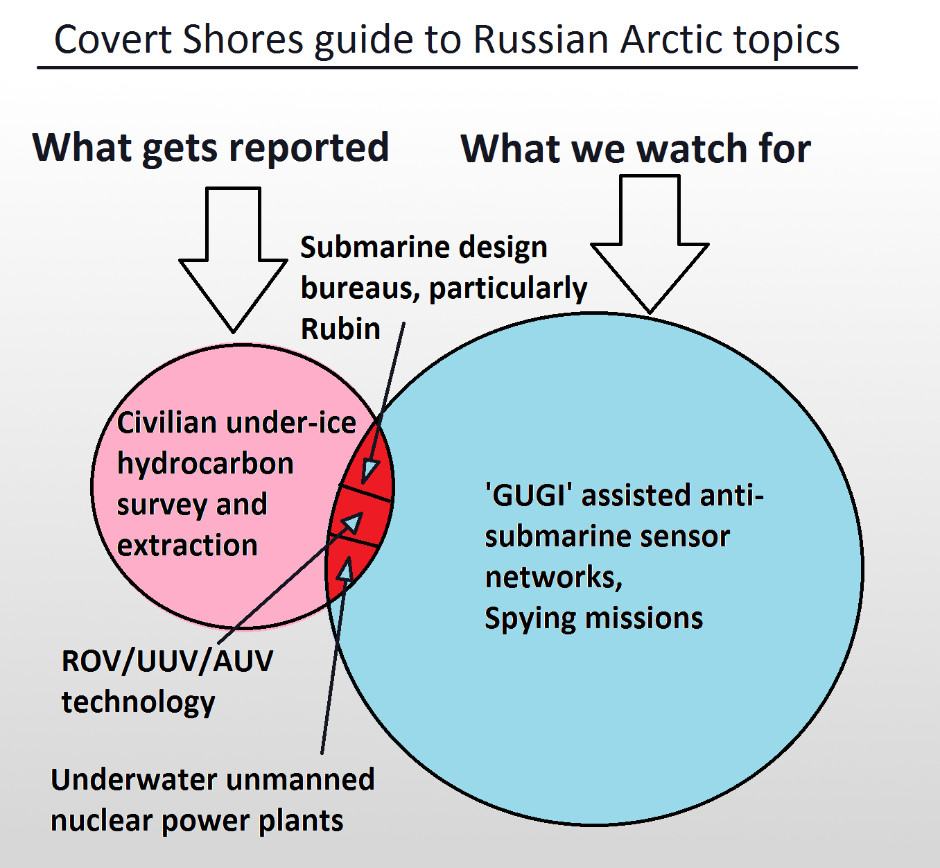
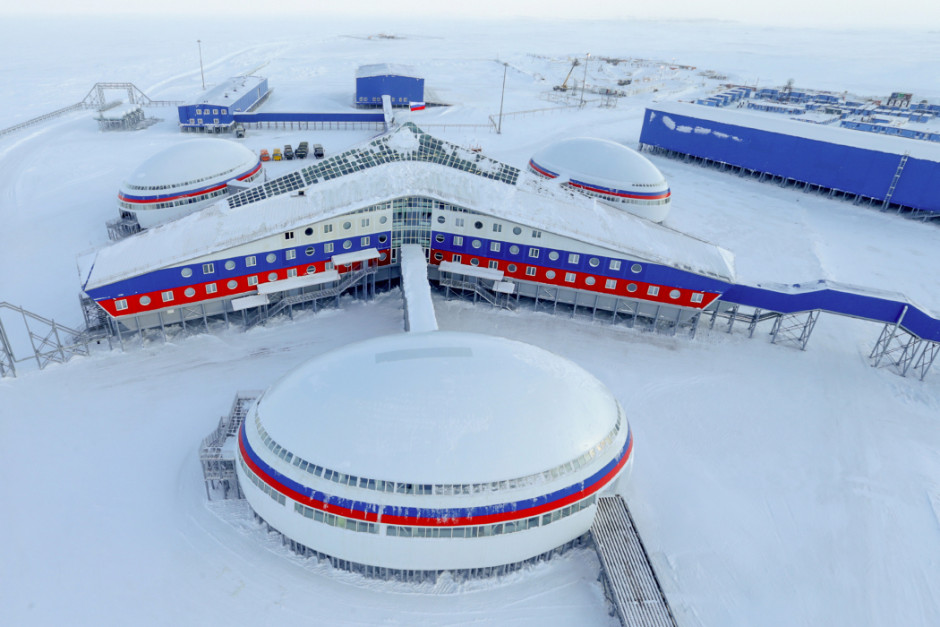
The recently revealed Russian 'Arctic Shamrock' base on the island of Alexandra Land. Source Russian MOD
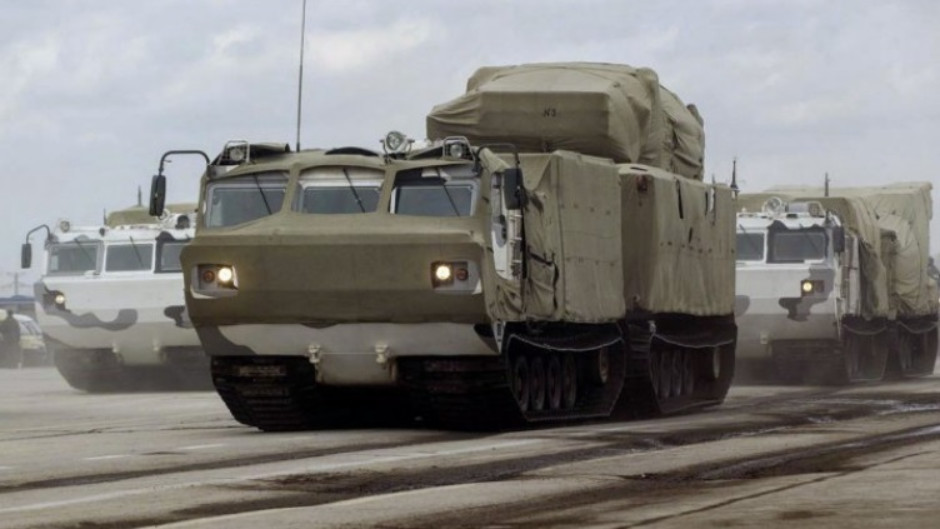
Russia has also recently unveiled a range of Arctic systems including this improved mobility Tor-M2. Source IHS Jane's Defence Weekly. They have also ordered new Project 23550 Arctic corvettes with ice-breaking bows.
More recent photo of the Tor-M2 SAM system. Added to article retrospectively on 2nd April 2018.
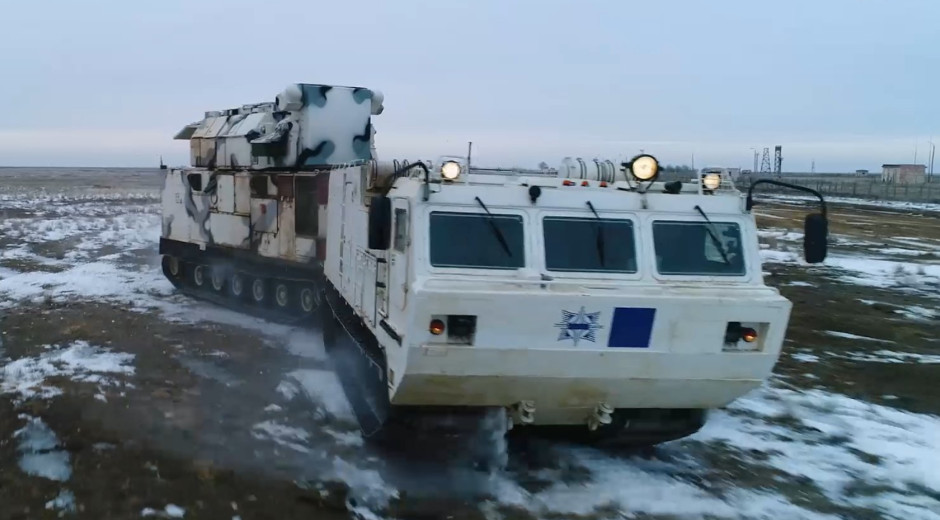
Related articles (Full index of popular Covert Shores articles)
 Russia seeks submarine advantage in Arctic (SHELF system, GUGI special mission subs)
Russia seeks submarine advantage in Arctic (SHELF system, GUGI special mission subs)

 Yantar spy ship loitering over undersea cables
Yantar spy ship loitering over undersea cables

 Project 09852 Belgorod Special Mission submarine (spy sub)
Project 09852 Belgorod Special Mission submarine (spy sub)

 HUSKY Class future attack submarine
HUSKY Class future attack submarine

 USS Parche spy sub par-excellence
USS Parche spy sub par-excellence

 BS-64 Podmoskovye Special Mission (spy) Host Submarine
BS-64 Podmoskovye Special Mission (spy) Host Submarine

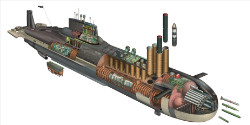 Russian Typhoon Class SSBN
Russian Typhoon Class SSBN

 P.09851 KHABAROVSK and KANYON (Status-6)
P.09851 KHABAROVSK and KANYON (Status-6)

 Russian unbuilt spy submarine MPS
Russian unbuilt spy submarine MPS

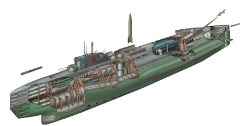 Stalin's Super Sub, Project P-2
Stalin's Super Sub, Project P-2

 Russian Losharik spy sub
Russian Losharik spy sub

 Project 1910 UNIFORM Class deep diving spy sub
Project 1910 UNIFORM Class deep diving spy sub

 USS Halibut
USS Halibut

 USS Seawolf (SSN-575)
USS Seawolf (SSN-575)

 Russian X-RAY Class spy sub
Russian X-RAY Class spy sub

 Russian Sarov experimental sub
Russian Sarov experimental sub

